This home album photo depicts a 1936 Hillman Minx de luxe which has returned from Egypt, probably in the ownership of a serviceman in the Royal Air Force, posted to the Egyptian Suez Canal Zone before the war . There he was given sand-cast alloy plates CL Privé 1526 – Private use/Canal/vehicle 1526. This manufacturing method gives rise to the longest-lasting, strongest numberplates. The 1936 British registration WV 9778, was issued by the County Council of Wiltshire, in which many RAF establishments were located. It may be the Hillman’s original English plate from new, or it may be a new registration issued on it’s return to Britain. Happily, the squadron-leader has left both plates for us to enjoy, though the village policeman would have scolded him for showing both …… It crosses my mind that the elder boy MIGHT be member John Pemberton himself – which, in 1938, say, it could well have been! (Confirme
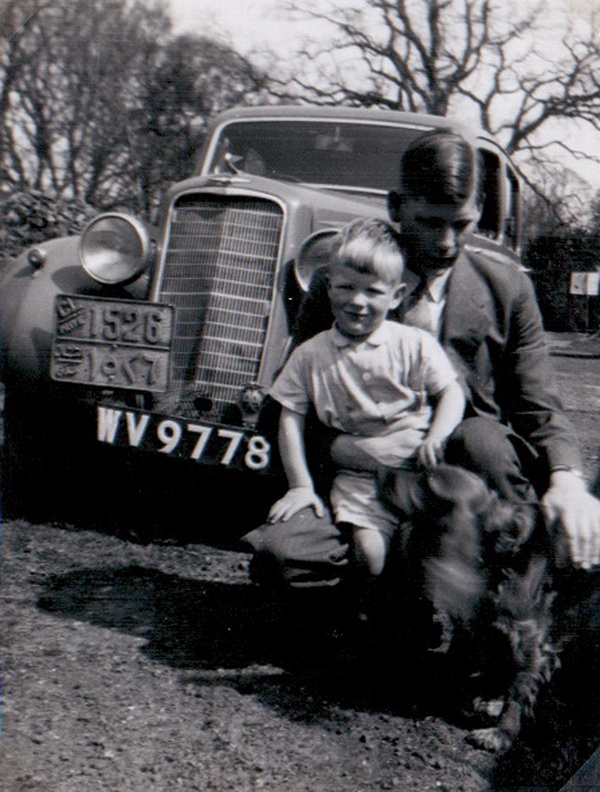
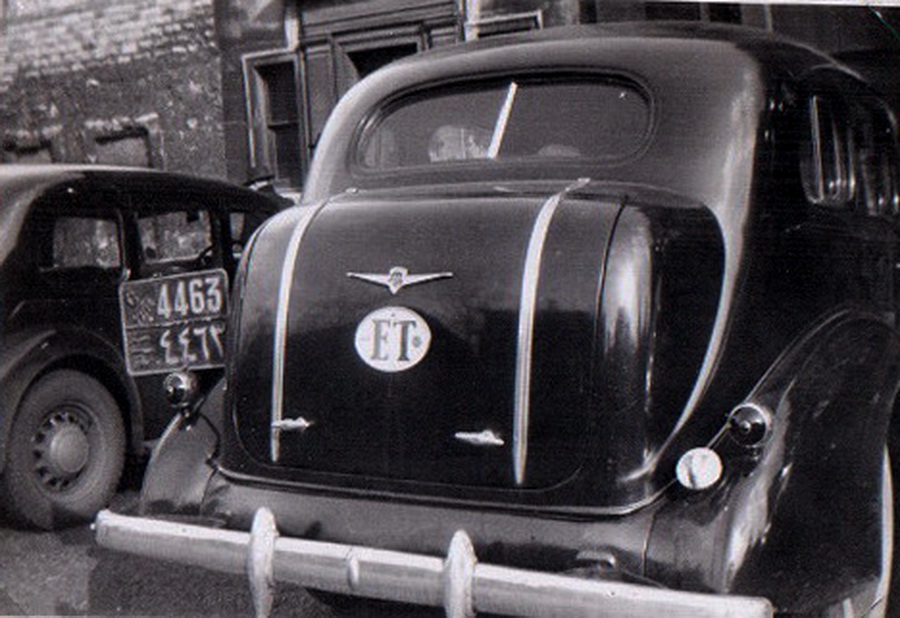
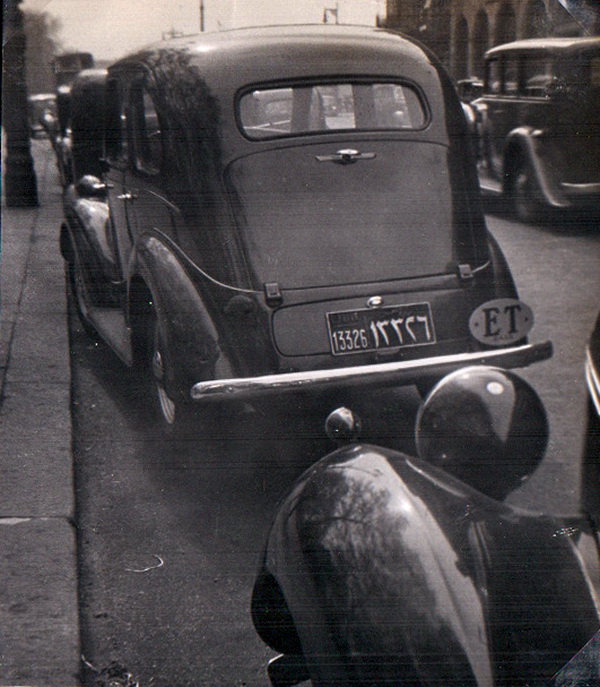
An English family we knew, lived in Cairo in the 1930s, where there was a thriving motor club and great interest in sports cars. They kindly passed VB a pictures of their cars there, the first being the sporty English Wolseley Hornet:
Note that this Egyptian series preceded the later PRIVÉ series above, using simply the city code (usually in roman and arabic) as a central separator (in red) for the numerals. These two only show the C in roman. Their second car was a French Mathis (perhaps a 1932 Emyquatre) registered C 6700 – a big jump from 940, on the Wolseley of similar production year. Why?
Below: Here’s one from the same 1913-56 series, using both scripts as separator. 3 BS 3 (Beni Suef) on a Vauxhall 12 (if you can see it).
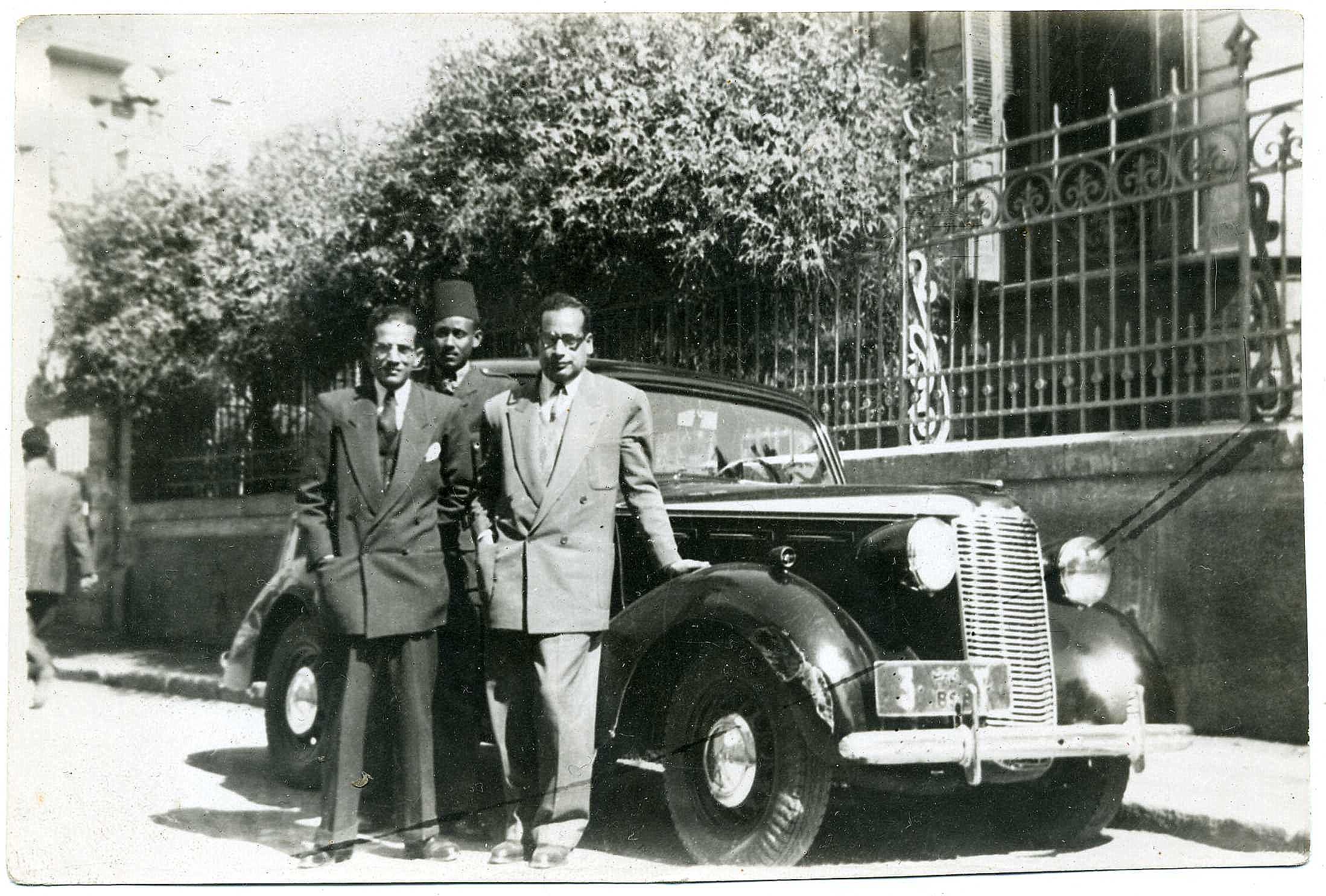
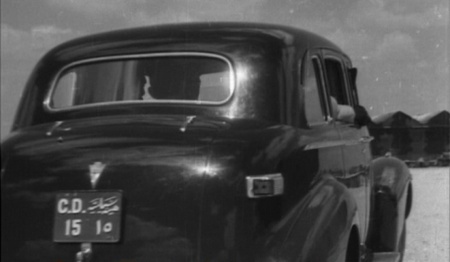
Because of the constant shortage of material, Egyptians were obliged to wear hats without a brim, which worked OK save for the brief rainy season.
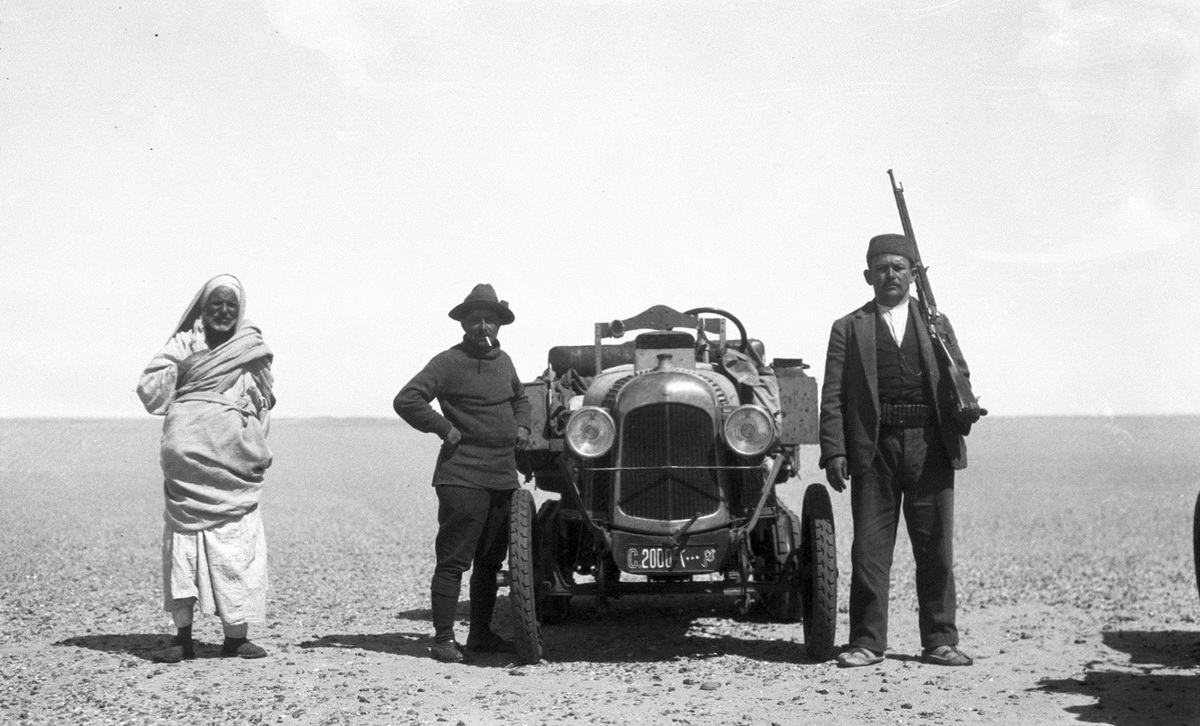
Colonel Blinman of Penn, Bucks., UK had this plate hanging in his garage when I visited him in 1974 to deliver his new lawnmower. Painted on the obverse of the other, long, front plate, was the new Buckinghamshire number allocated to his Hillman Minx when he returned from military duty at The Canal in the ’50s. My need was agreed to be greater than his, for this pair of redundant plates, and I left clutching them with glee and a promise of a free first mower service!
Below: Taxi (orange) from DT = Dumyāţ, seen in Cairo by Angela Brumby 1966, in sea transit to Australia. A Fiat 1400/1900? Not so, says David Wilson – it’s a Canadian Dodge (see comments)
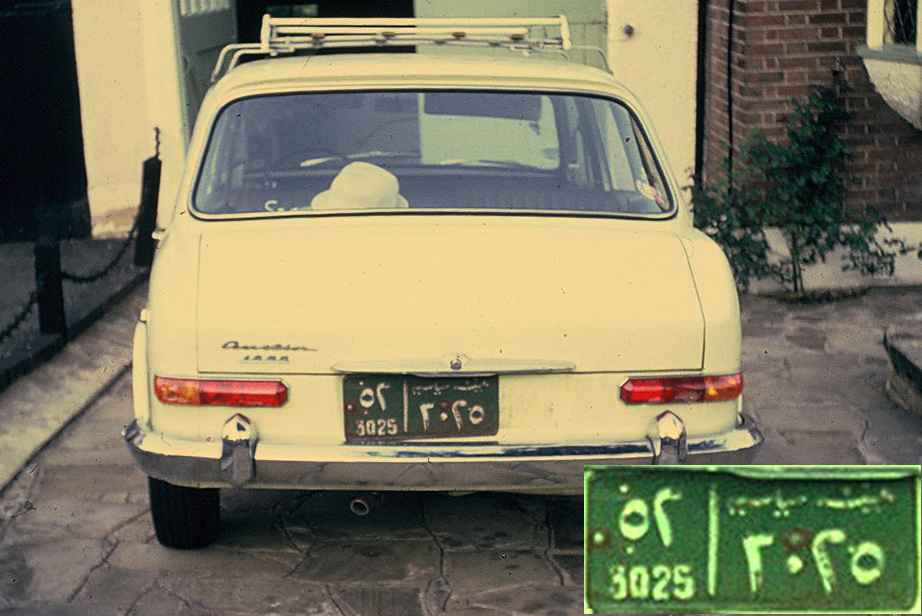
~~~~~~~~~~~~~~~~~~~~~~~~~~~~~~~~~~~
Well, that’s where John Pemberton’s pictures of ‘Egypt in England’ have led us this time! Next – West Africa. ~~~~~~~~~~~~~~~~~~~~~~~~~~~~~~~~~~~
But…. we have few other early Egyptians, too…….. Cairo Alexandria Cairo Canal Zone (front) Alexandria Unknown – probably Cairo.
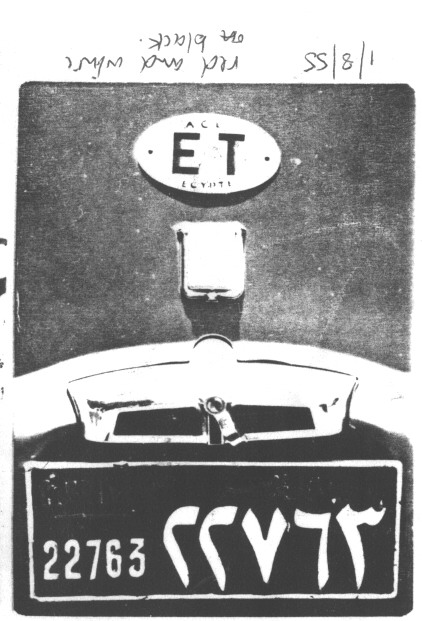
All die-cast in sand, except Canal Zone 1484, which is painted on the obverse of a British plate previously used on Colonal Blinman’s Hillman. Plus……
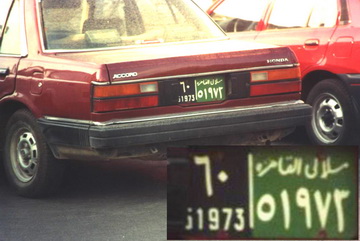
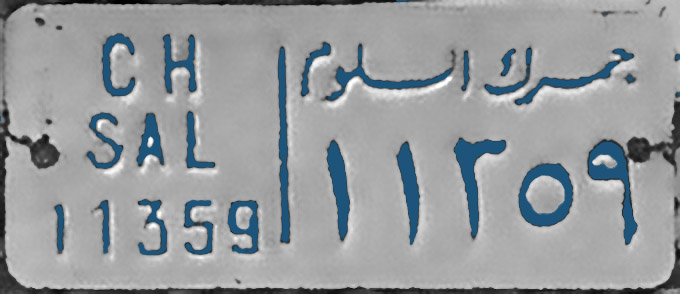
ALX from Alexandria.
::::::::::::::::::::::
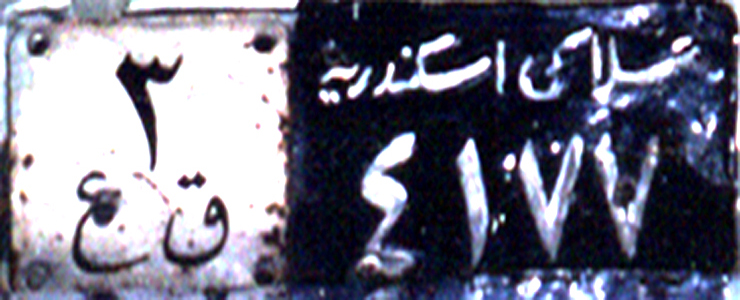
……and 3 different CD layouts, possibly from different periods….
Uncoded CD 3009 – remains undefined. Embossed.
2020 – valuable response sent to the Blog by ‘Tom Tom’:
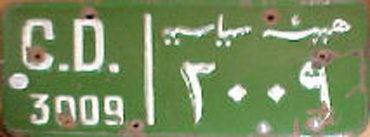
1 / 7018 below is identified by ‘Tom Tom’ (25/01/20) as a 1958c-73 issue, with ‘1’ as the code for the Soviet Union. The embassy code was given only in arabic. The 7018 meant nothing and was simply a serial. See 31/1301 below (which looks to be embossed).
CD 52 / 5035 is probably a variant of the 1958c-73 series. Hand-painted on flat sheet, whereas 7018 above had been in pressed steel, probably still hand-painted. Embassy 52=United Kingdom.
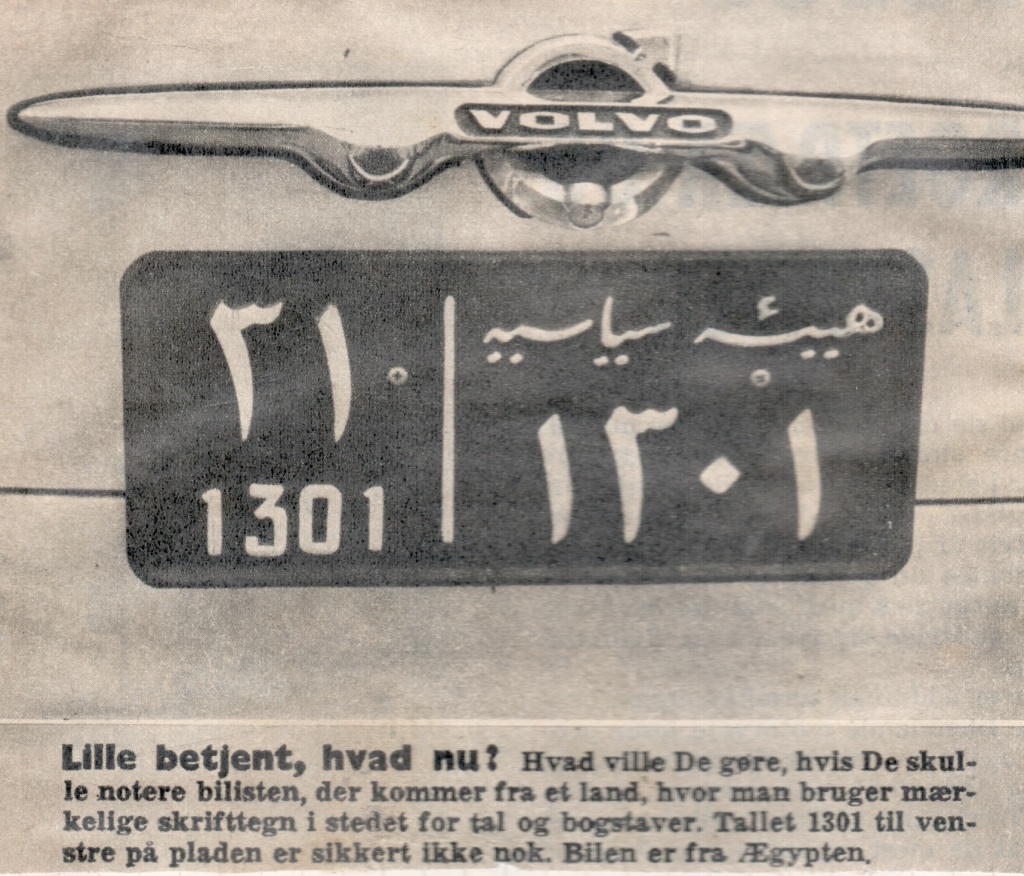
And added later, 31/1301, another 1956c-83 series image, with diplomatic code 31 for Sweden.
In all cases the arabic script translates to ‘Political Corps’.
:::::::::::::::::::::::
Below are two temporary transit plates, handpainted, seen in London, years apart. The first is from Port Said (1972) and the second from Suez (1976). They are thought to be ‘get-you-to-the-border’ exit* plates, valid for a few days for vehicles leaving Egypt and made to hand back in their normal plates. They and have surprisingly high serials.
*Japan and Hungary CD also employ this system of retaining their national plates when vehicles are known to be leaving the country permanently.
:::::::::::::::::::::::
Below: An odd UN type from the 1960s. Personnel attached to the World Food and Agriculture Organisation, who had a semi-diplomatic status. White on black. Reading: Private, Cairo 1/D 53003. (Tom Tom). The arabic letter D indicates an embassy/Organisation-owned vehicle; the 1 code could signal USSR – but on a British Morris Oxford ??????
That all for now (16/06/2020)
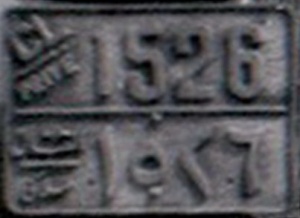
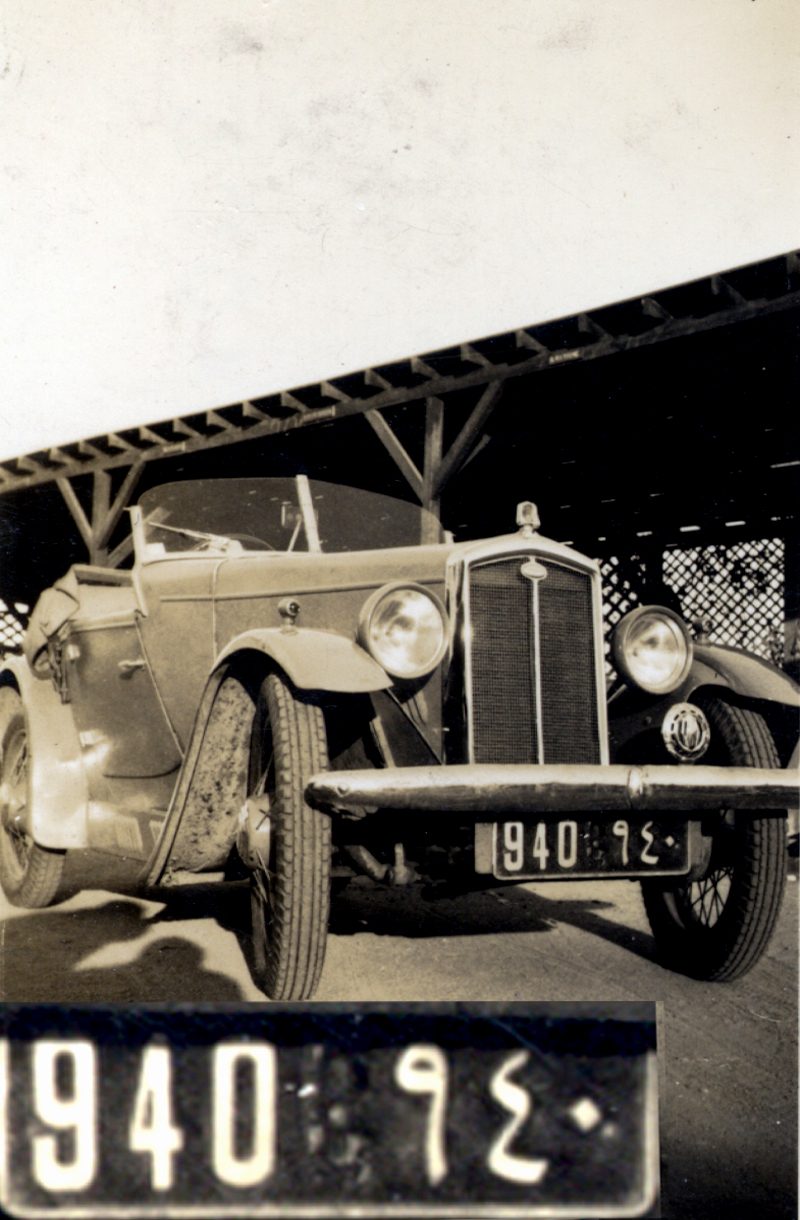
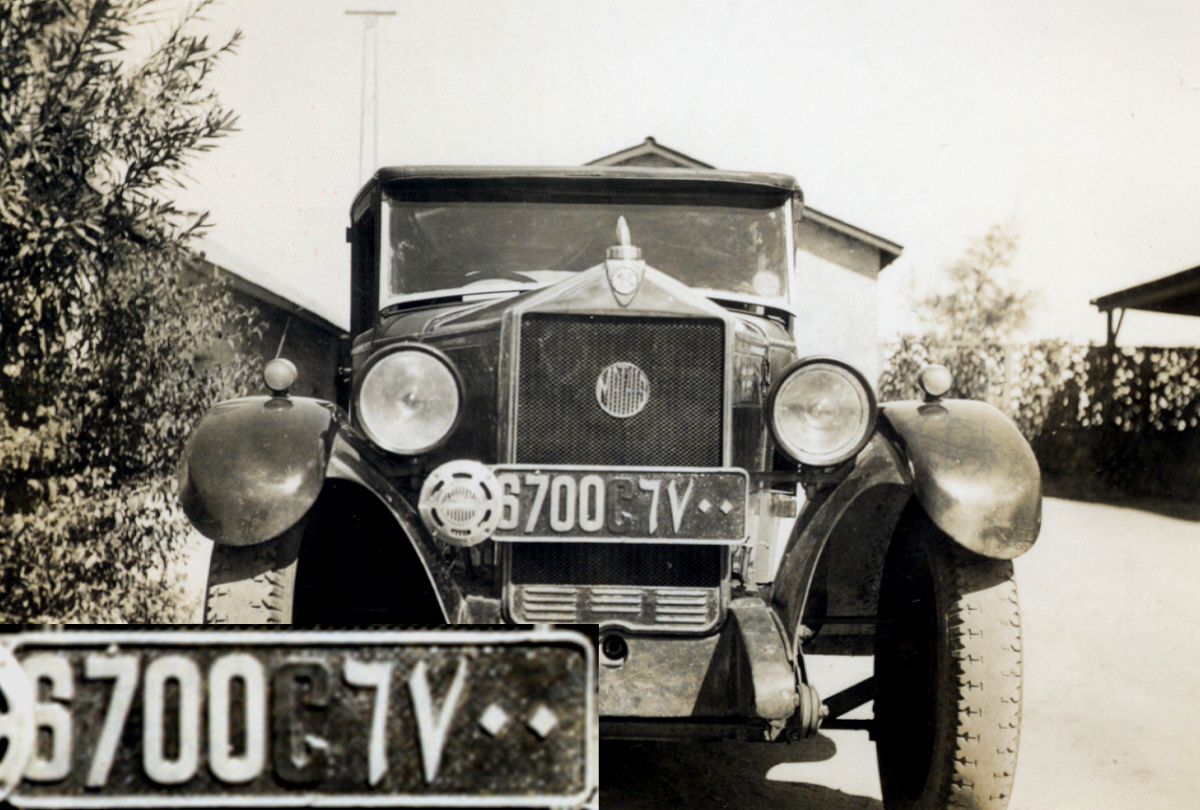
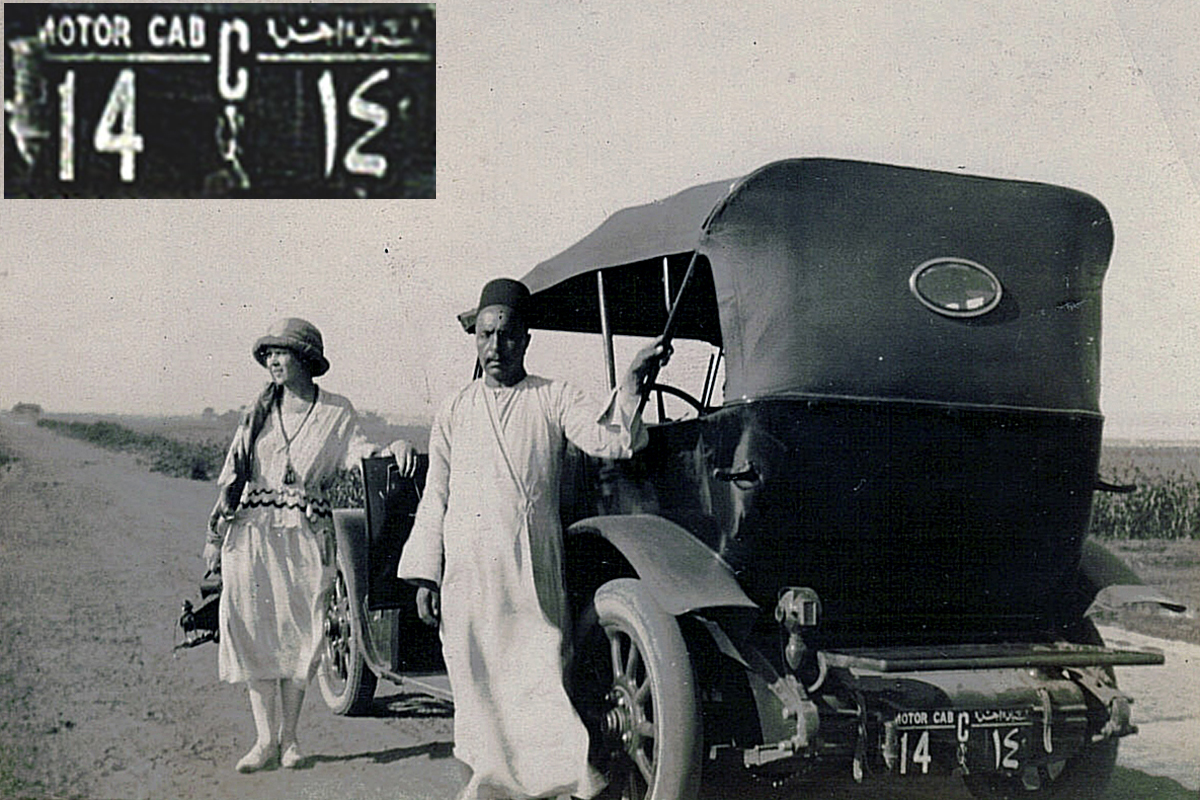
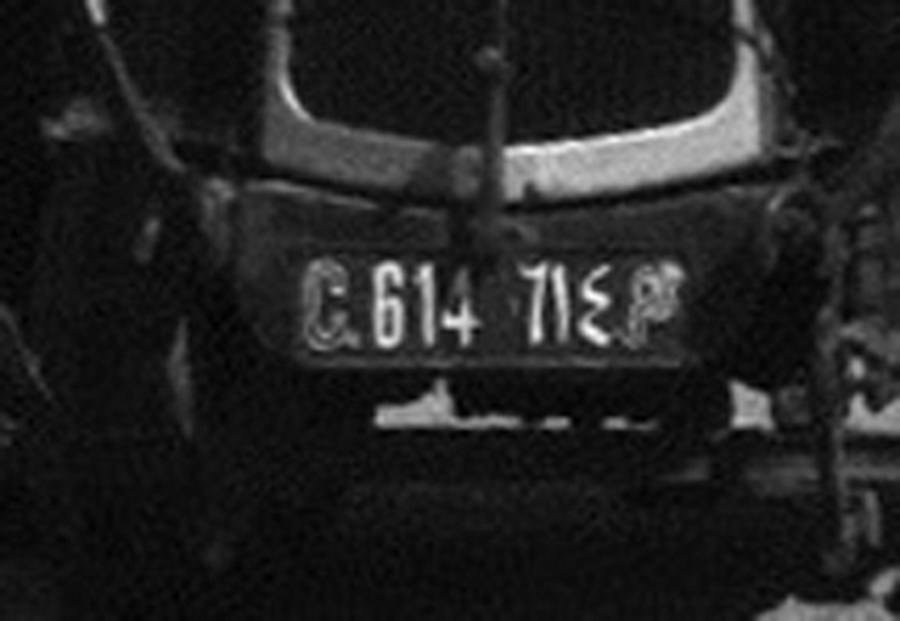
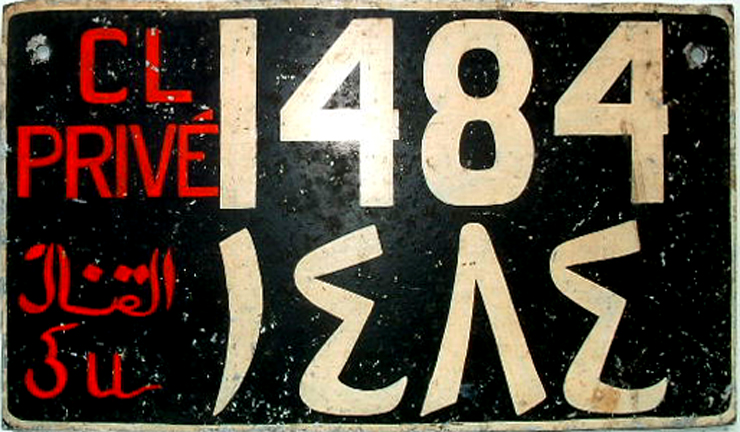
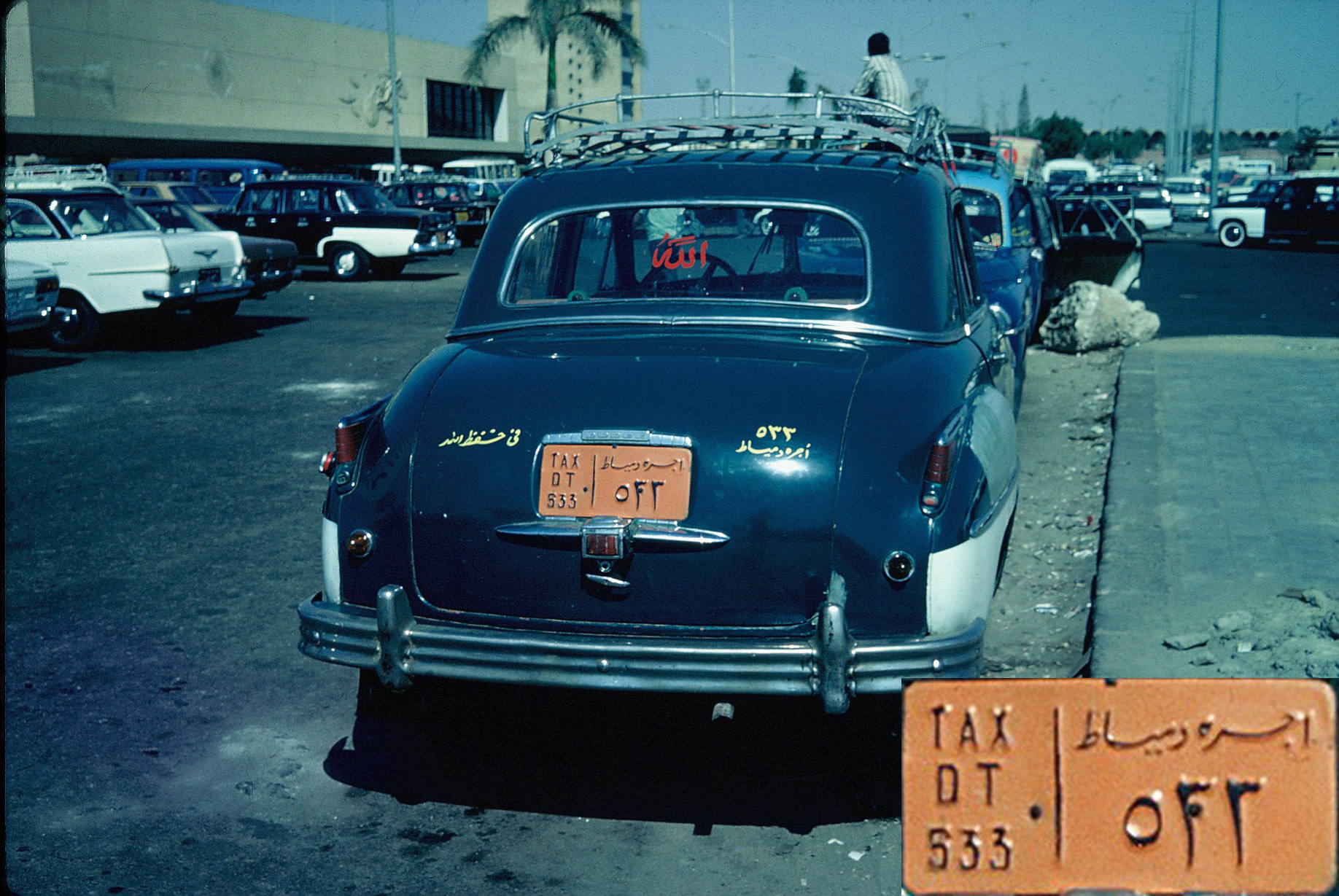
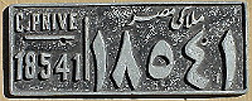
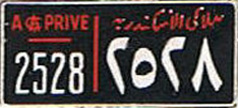
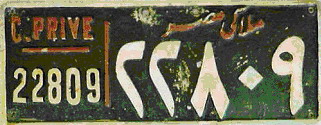

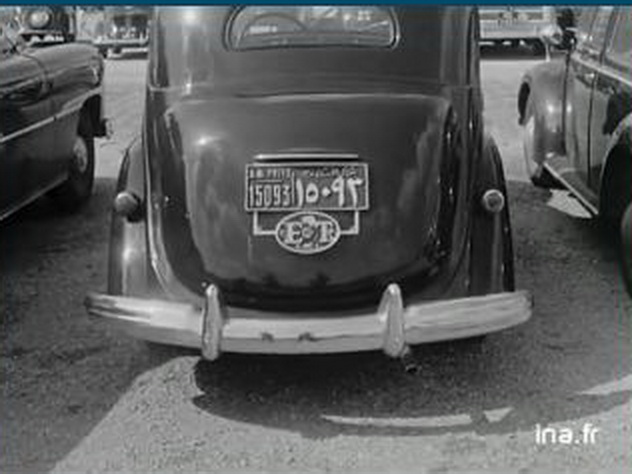
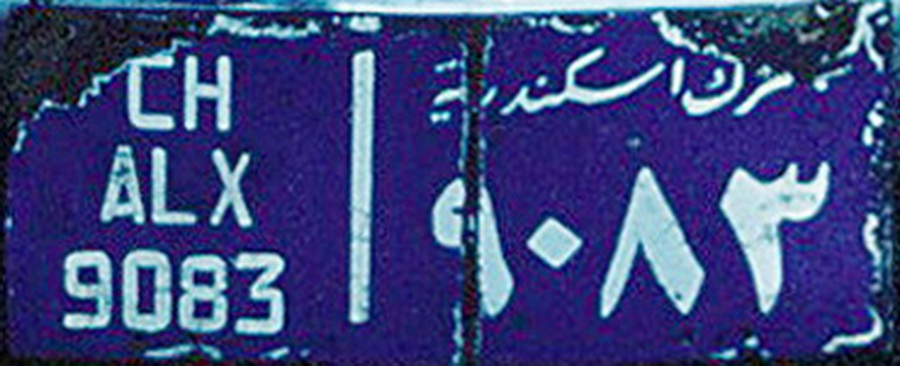

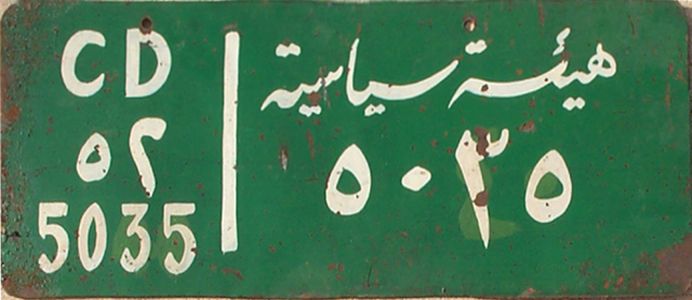
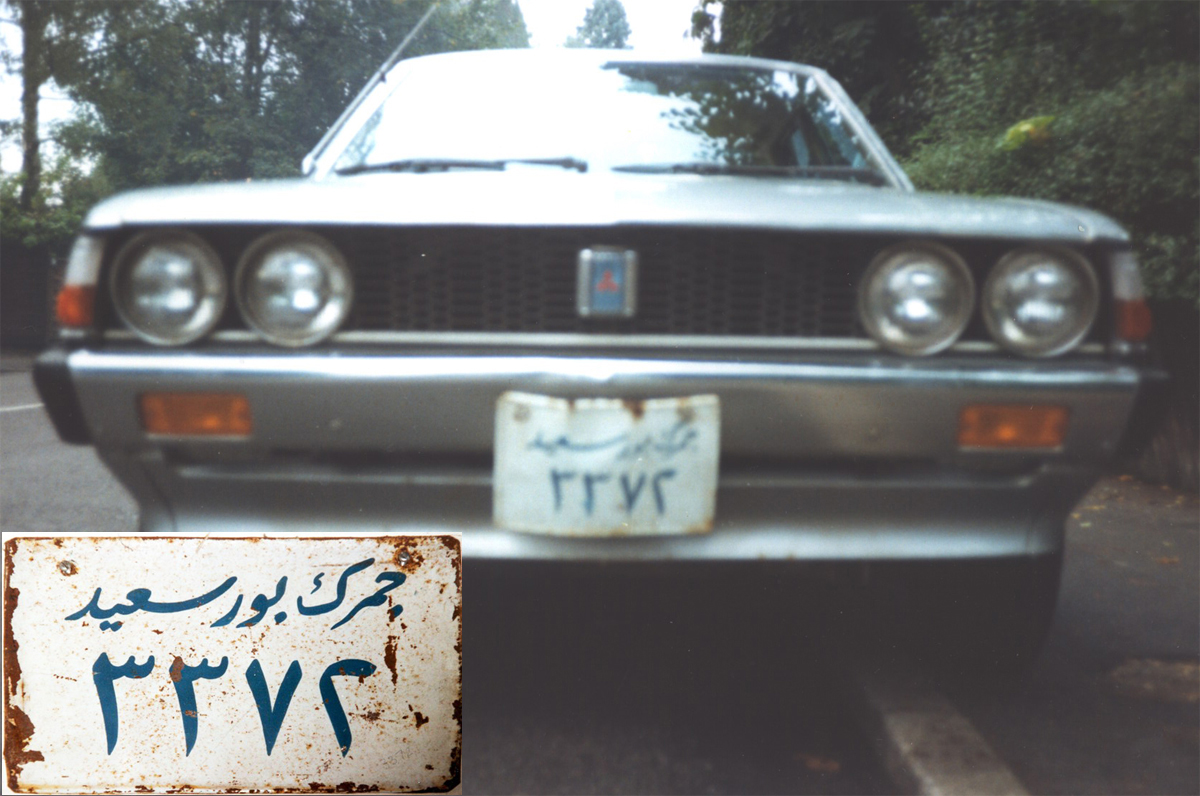
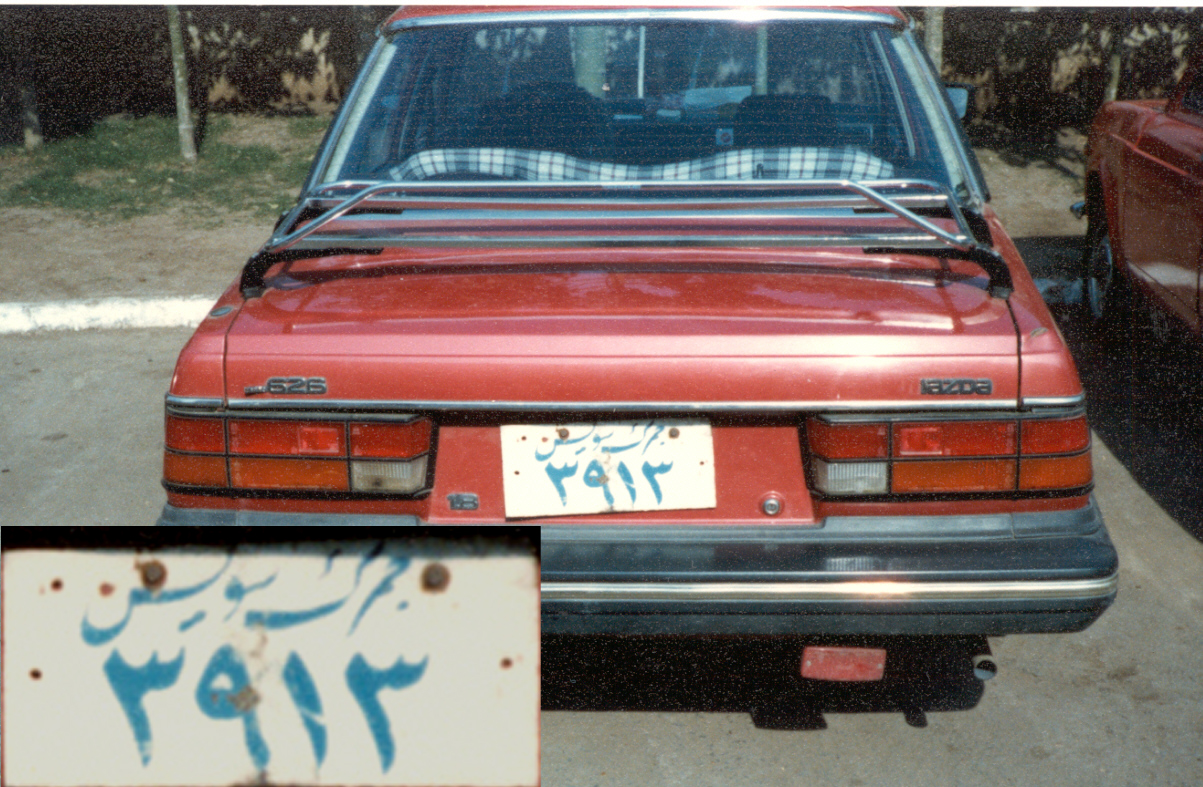
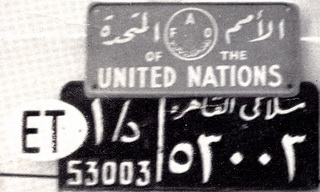

WV 9778 would have been issued in early 1936.
Regards
John
Well done, John – I thought you might come up with that detail! So that was the Hillman’s first English plate, before it went out to the Middle East…….
Taxi DT 533 is no Fiat, but rather a 1949 Dodge, possibly a Canadian or export version, which had a Dodge front end and a Plymouth rear end–the common practice in Canada for Dodges (and also Pontiacs, which had Chevrolet rear ends) in the late 40’s/early 50’s.
Good i/d, David – you know your North American metal! Most of the Pemberton photos seem to be on big yanks, most of which I can’t define by make or model. Get your close-up specs out, would you?
The 2nd diplomatic plate (1/7018) is from the 70s or 80s. 1 is the code for USSR. Numbers were given regardless of the country code, and the country code was written only in Arabic. Even the more recent plate below it, has the country code written only in Arabic, but adds the CD inscription.
CH/SAL is from Saloum. Temporary import plates were either (light) blue on white or white on (light) blue.
The 3rd plate below “CH” plates (white on black) is not temporary import, it seems to read “Private, Alexandria / 4177”. The white plate left of it with the number 3 and two Arabic letters, it is unknown, possibly an early issued plate on the same car.
The plate described as “an odd UN type” is indeed very odd, as the black plate below reads “Private, Cairo”, but on the left above the number in European digits, it reads “1 /D” or “A /D”.
Regards,
Tom
Good extra detail, TomTom – thank you. Now all entered in The Blog. (How do you know this stuff???) Vic B.
There is still an error on the plate “seen at Luxor”. It is not registered in Luxor, but Alexandria, as I’ve previously written. The arabic text on the top right reads: “ملاكي اسكندرية”
The first word (from right to left) reads “M(a)laki” which as adjective, means private. It is (was) used on Egyptian registration plates for private vehicles. It is less common in other Arabic countries.
The 2nd word reads: Ask(a)nd(a)riya = Alexandria.
The Arabic writing skips wowels in certain circumstances. Also notice the writing on license plates is more cursive than it may be rendered on screen.
So, that registration plate reads: Private, Alexandria / 4177.
Luxor should have been written something like “الأقصر”, but in a cursive style, obviously shorter than what is wrtitten on that plate, that is, Alexandria.
Regards,
Tom
License plate 4177 is indeed a private Alex registered tag. The ٣ ق ع next to it is an ad-hoc placement to identify the vehicle a belonging to the nationalized sector number 3 (government owned business قطاع عام)
MANY thanks AD! An unusual attachment to note a gvt. sector. I shouldn’t think many modern Egyptian citizens would have that data!!!
Thanks Victor, later the government issued a license plate designed for those entities and stopped using this adhoc setup.
That ad-hoc plate seems to be an extra plate anyway, while the “regular” registration is the black one on the right, as confirmed, from Alexandria.
Also, speaking of the registration place, in the 1980s, as far as I remember, the Governorate of Luxor did not exist, and cars from Luxor were registered in the Governorate of Qena (encoded KN on plates), the governorate that Luxor belonged to.
I remember some of the codes they used on registration plates which had some inscriptions with the Latin alphabet.
Here is the (incomplete) list:
C = Cairo (sometimes written “CAIRO” on hand-painted plates)
GZ = Giza
ALX = Alexandria
PTS = Port Said (Plate was half white on green and half white on black, as it was a duty-free zone) – Colour scheme very similar to registration plates of non-diplomatic staff, who used numeric country codes instead of letter codes.
ASN = Aswan
AST = Asyut
BH or BHR = Beheira
BS = Beni Suef
DK = Dakhalia
DT = Dumyat (Damietta)
FYM = Fayoum
GH or GHR = Gharbia
IS = Ismailia
KB = Qalyubia
KBH, KBK = unknown, possibly hand-written variations of KB
KFS = Kafr El Sheikh
KN = Qena
LUX = Luxor (added later, did not exist as governorate in 1984)
MN = Minya
MNF= Monufia
NS = North Sinai
RS = Red Sea
SAL = Saloum (seen here for the first time, not the name of the governorate)
SHG(?) = Sohag
SS or S.SIN = South Sinai
SUZ = Suez
Diplomatic codes (very few, as much as I remember):
1 = USSR
2 = not used as of 1984. Given the number, it was likely a country they’ve had very good diplomatic relations with, and then broke them up (for instance, Syria).
17 = Portugal
22 = Poland
29 = Romania
31 = Sweden
52 = Great Britain
53 = Norway
60 = Greece
76 = South Korea
There were gaps in the number list, the most notable being no.2.
I remember that back in 1984 or 1985, the highest code was 111 or 113. I’ve seen 111, and 113 was on a list of country codes.
The registration number was issued regardless of the embassy code. It was customary for many countries to use the lowest registration number they had, for the official car of the chief of mission (i.e., ambassador’s car). They were also reusing the registration numbers on new cars replacing older ones.
As far as I remember, in 1984, the number of diplomatic registrations did not exceed 10000, or there have been very few 5-digit registration numbers in use.
Regards,
Tom